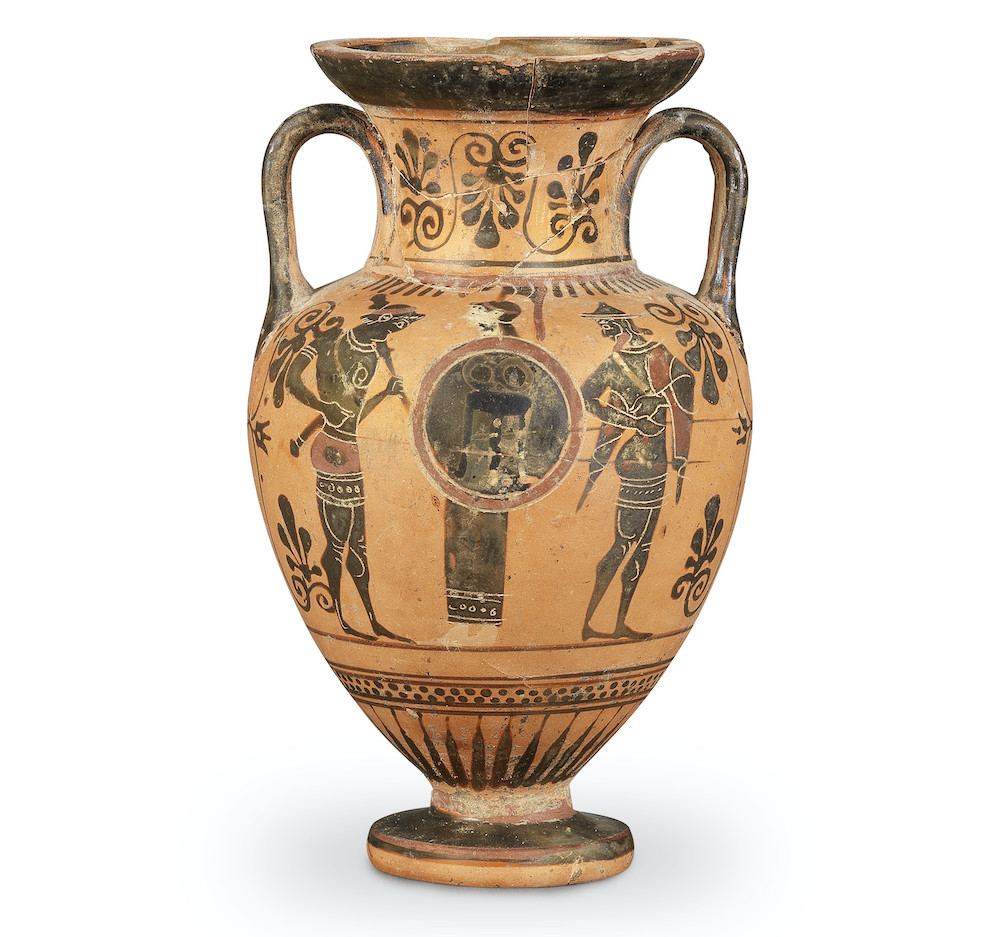Ancient glassware collection at Bonhams
A fascinating and important collection of ancient glassware, assembled over a period of 30 years by the Dutch glass enthusiast and expert Nico Bijnsdorp, leads Bonhams Antiquities Sale in London on December 8.
Encompassing pieces from the 6th century BC to the 6th century AD, it includes a Roman pale green glass drinking horn from the Western Empire, circa late 3rd – mid-4th Century A.D. estimated at £25,000-35,000.

Rhytons or drinking horns were made with either an open or closed tip. When made with an open tip, the drinker held the rhyton in his raised hand and poured the liquid into his mouth. This meant he had to drink the liquid all at once. The closed-tip drinking horn, like the example in the sale, was used instead like a beaker and could be put down between mouthfuls.
Other highlights of the Bijnsdorp collection include:
An Achaemenid colourless cast glass shallow bowl, Western Asiatic, probably Persia, late 4th Century B.C. The thick cast bowl, with a wheel-cut groove on the interior below the flaring rim, is decorated on the exterior with twenty-one petals. The form of this vessel comes from metal and especially silver prototypes, while the fine colourless glass was made in imitation of rock crystal. Estimate: £20,000-30,000.

A Roman royal blue glass hexagonal bottle, circa late 1st Century A.D. This beautiful royal blue six-sided bottle with scrolled vegetal decorations is of the highest quality. It was made in two pieces moulded separately then melded together; the handle was attached subsequently. The decoration on the bottle is reminiscent of the signature work of Ennion, the best-known glass maker of the first half of the first century AD, although there is no hard evidence to suggest it was produced in the same workshop. Estimate: £7,000-9,000.

Joanna van der Lande, Bonhams Antiquities consultant, said: “Nico Bijnsdorp’s passion for, and deep knowledge of, ancient glass shines through this extraordinary collection. His keen eye for the very best, and most interesting and representative objects, is evident in the range and quality of the sale. We are looking forward to presenting the second part of the Bijndorp collection in July next year.”
Other highlights of the sale, which consists of 280 lots, include:
An Attic black-figure neck amphora of the Dot-band Class, attributed to the Bompas Group, Edinburgh Painter, circa 525-475 B.C. Side A depicts a beardless Herakles holding a club facing Athena, wearing a crested helmet holding a shield with tripod device, flanked by Hermes wearing the petasos (a broad brimmed hat), looking back towards the scene; side B shows a departing warrior donning his greaves, between a draped man and a woman holding a spear and a shield. The 15.5cm high vase comes from the collection of Dr Hans Stenzl, a research chemist at F. Hoffmann-La Roche & Cie. AG and J.R. Geigy AG and the inventor of important pain-relieving and anti-rheumatic medications. He formed his collection of antiquities between 1953-1968 and the six Attic vases in the 14-lot collection are all listed in the authoritative Beazley Archive at the Classical Art Research Centre, University of Oxford. Estimate: £4,000-6,000

A large (190cm x 140cm) Coptic wall hanging circa 5th-6th Century A.D. Of linen and natural, red, pink, green, ochre and dark brown wool, this beautifully preserved wall hanging (acquired by the vendor’s family in 1981) is composed of four horizontal bands of fruit bowls, the red fruit contained in pedestal krater-shaped vessels, interspersed with red, green and pink flowerheads, with heart-shaped floral buds in the vertical borders. It is likely that wall hangings such as this example were used in a domestic setting. The dry climate was helpful in the preservation of Coptic textiles, although it is unusual for a large hanging to survive in such good condition. These textiles would have been woven by Coptic Christians in workshops that continued to function into the early Islamic period. Estimate: £5,000-7,000.



